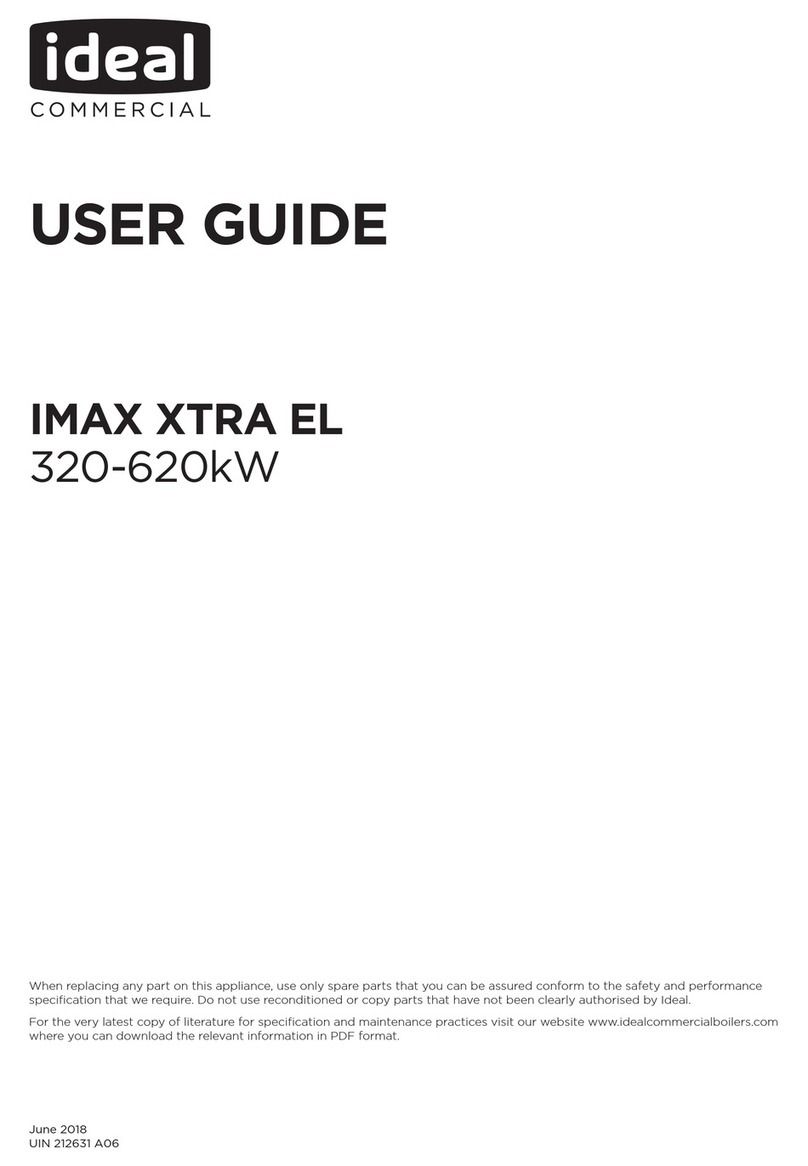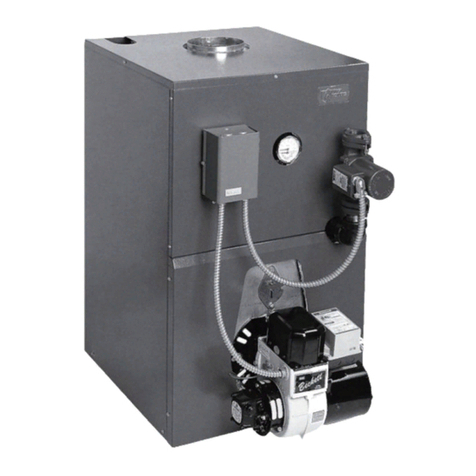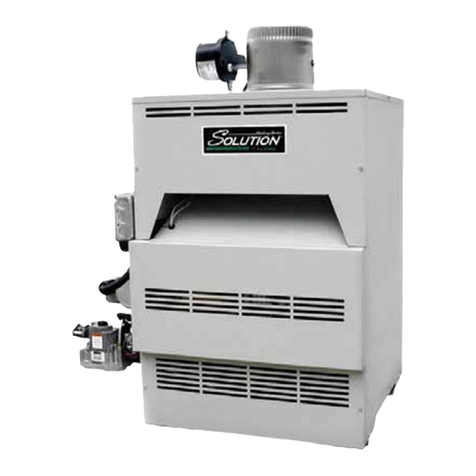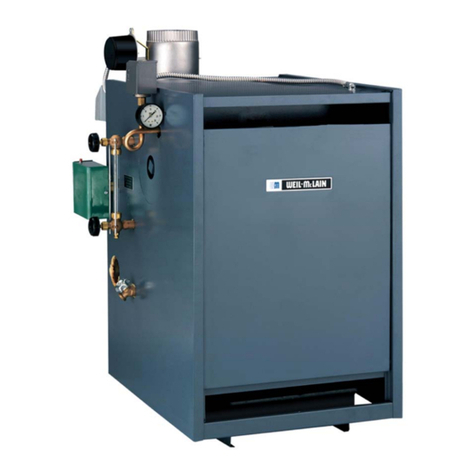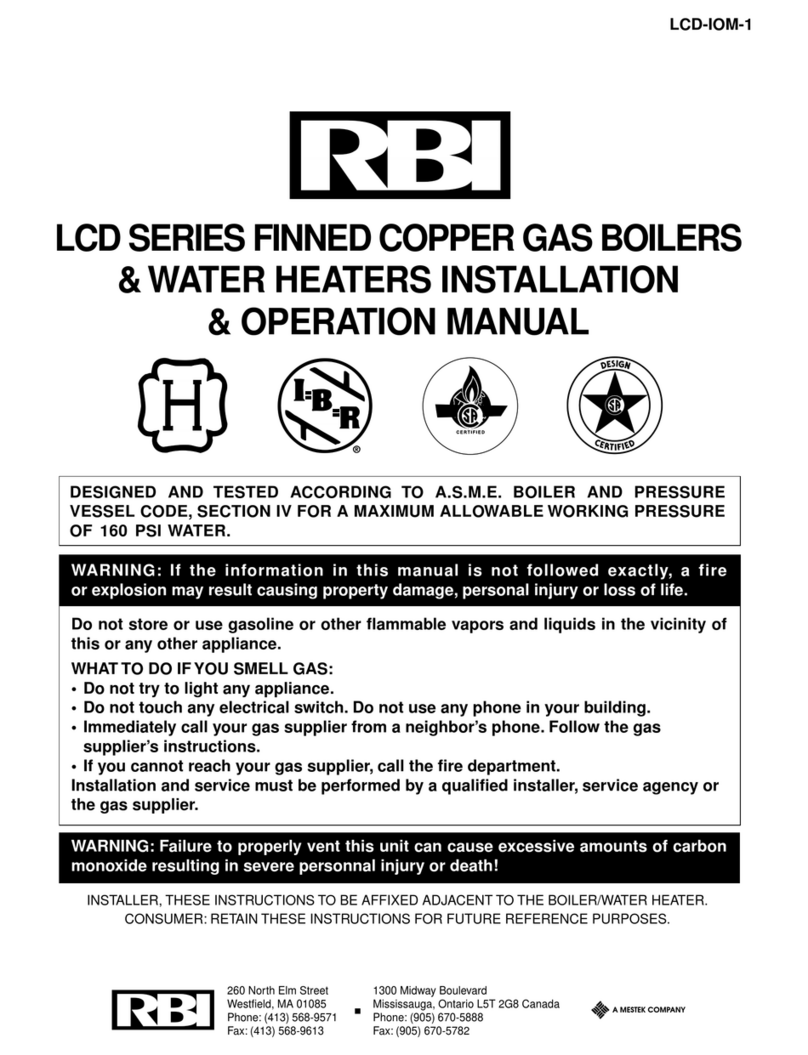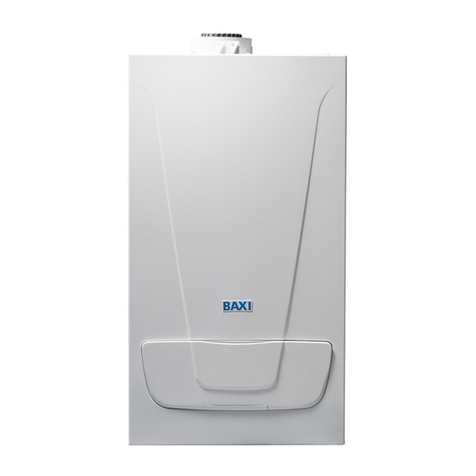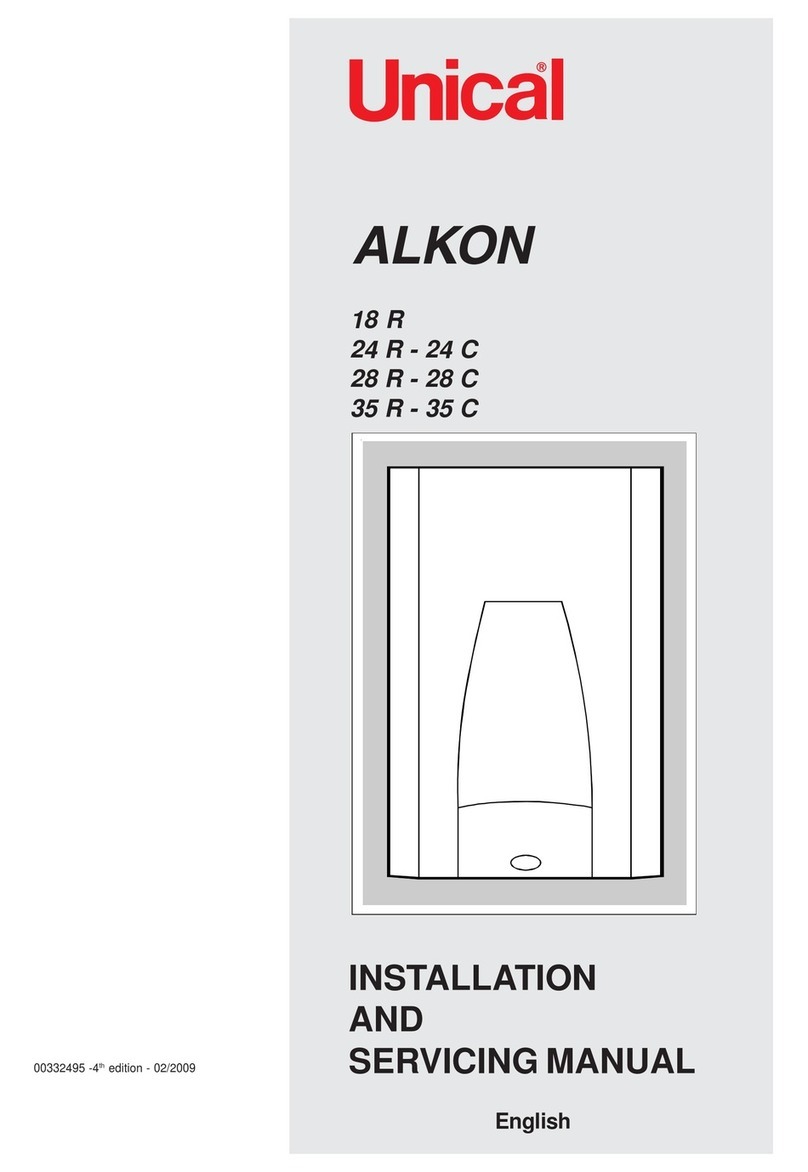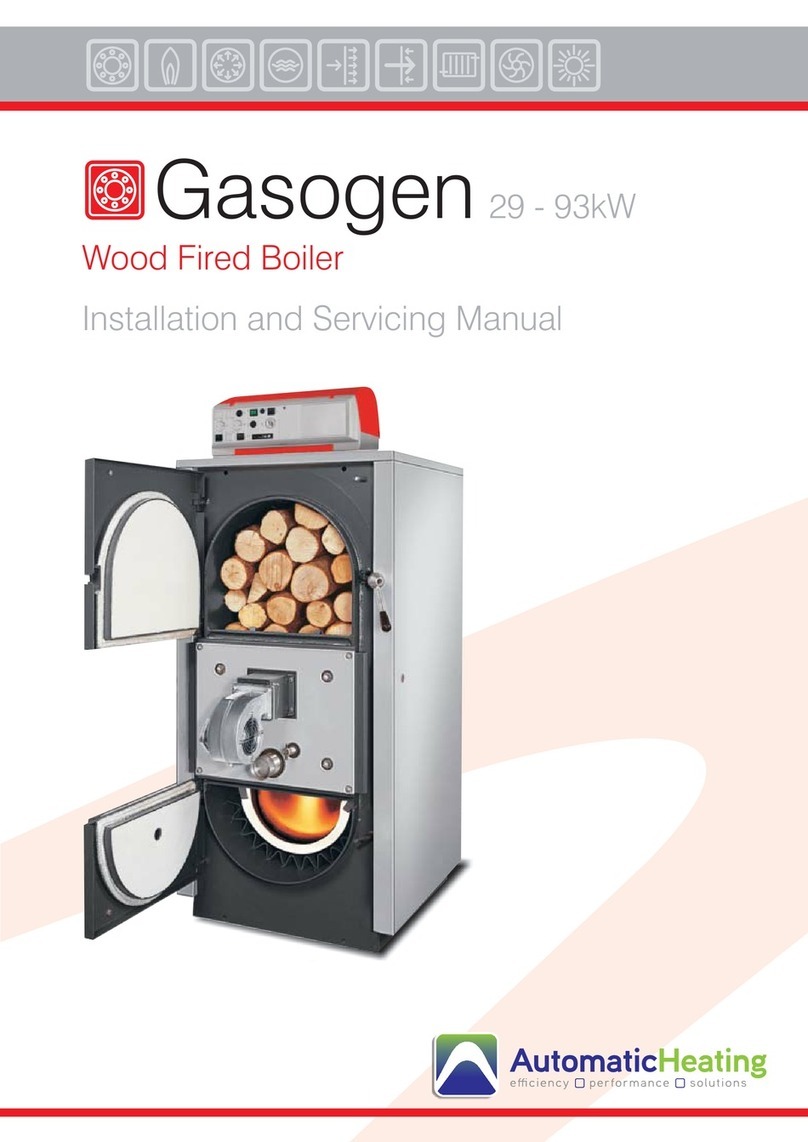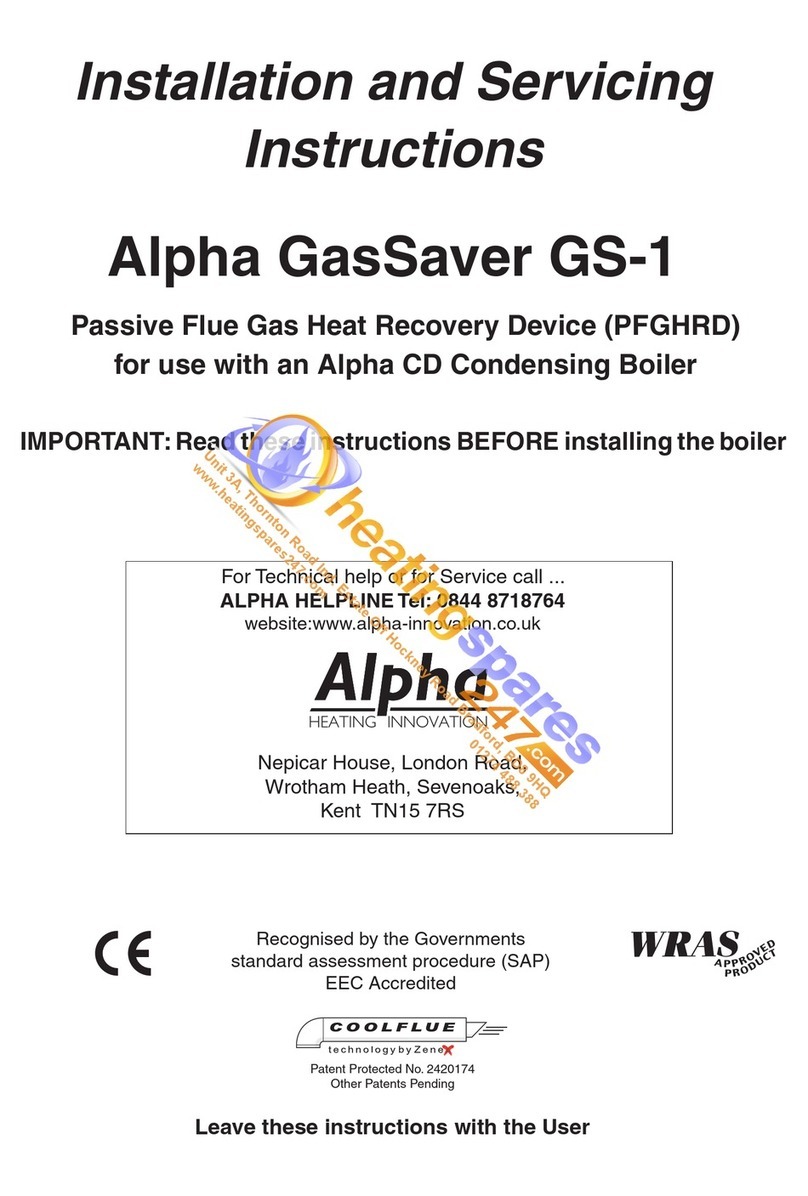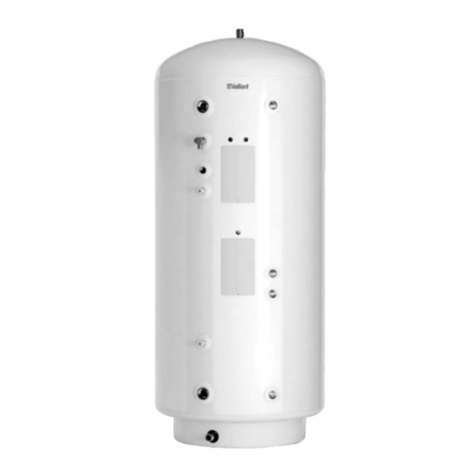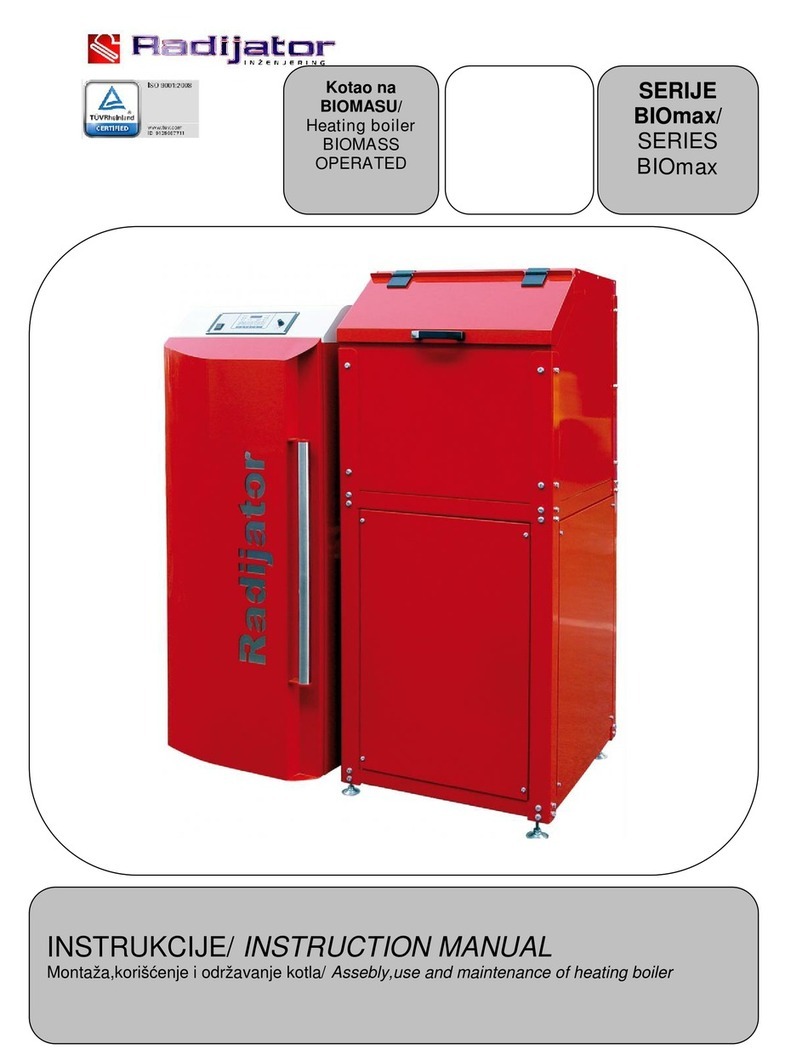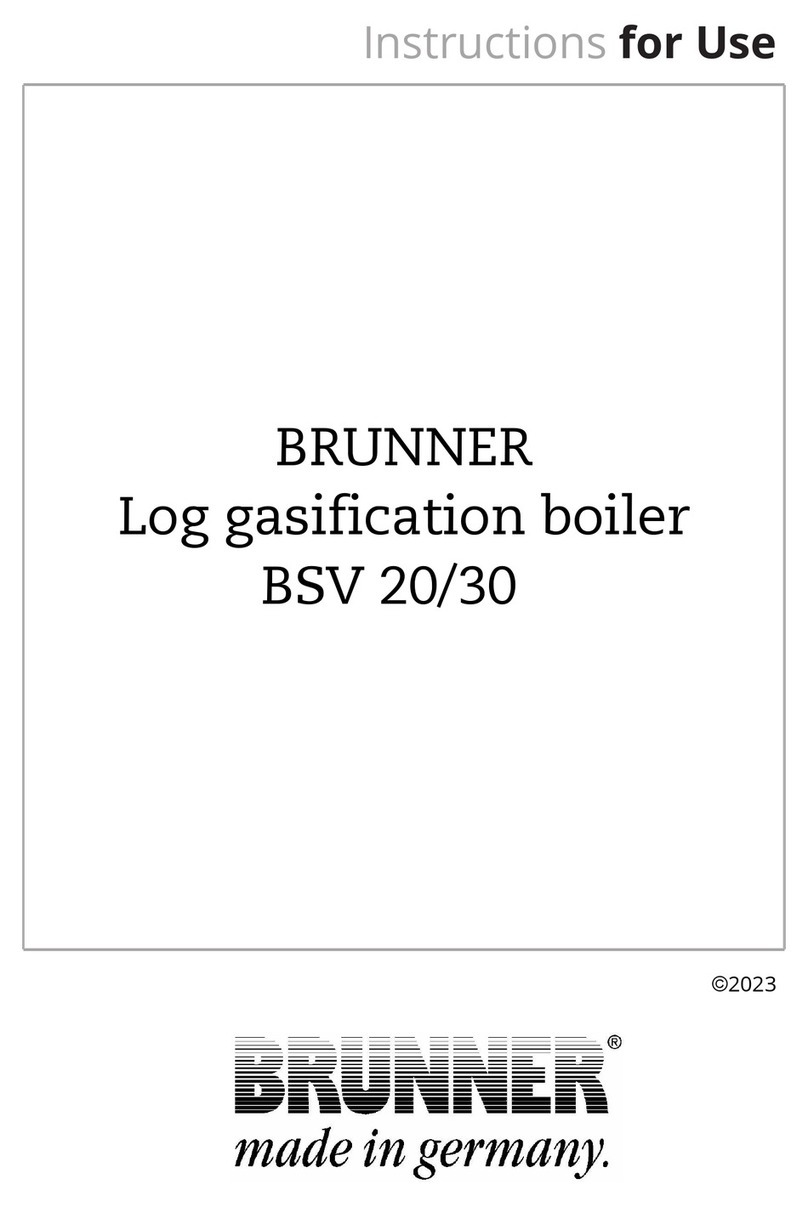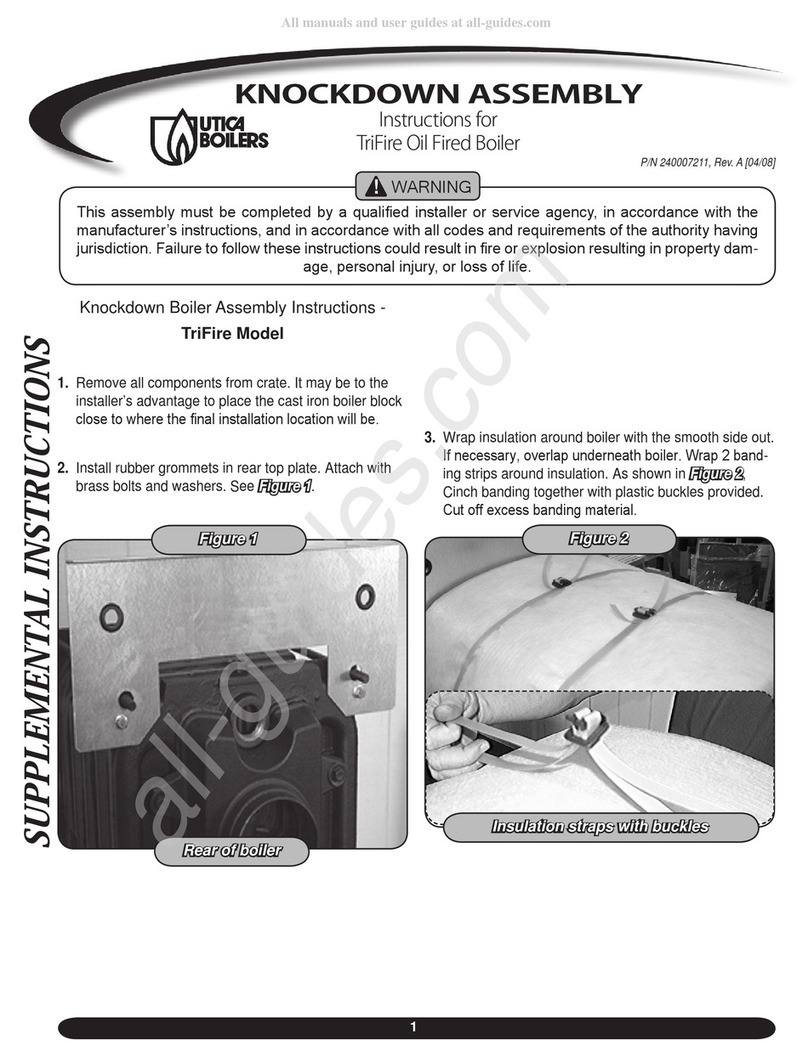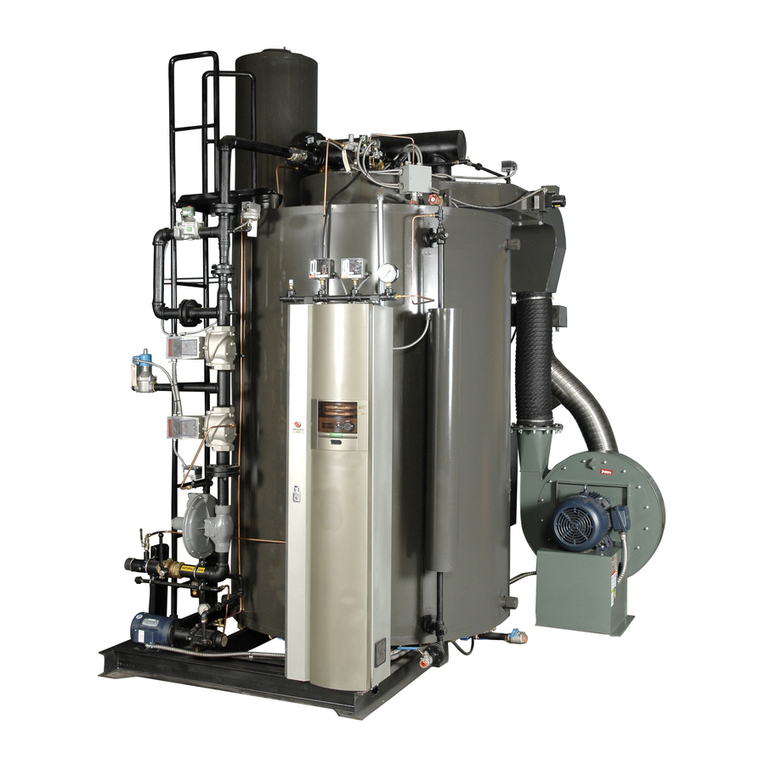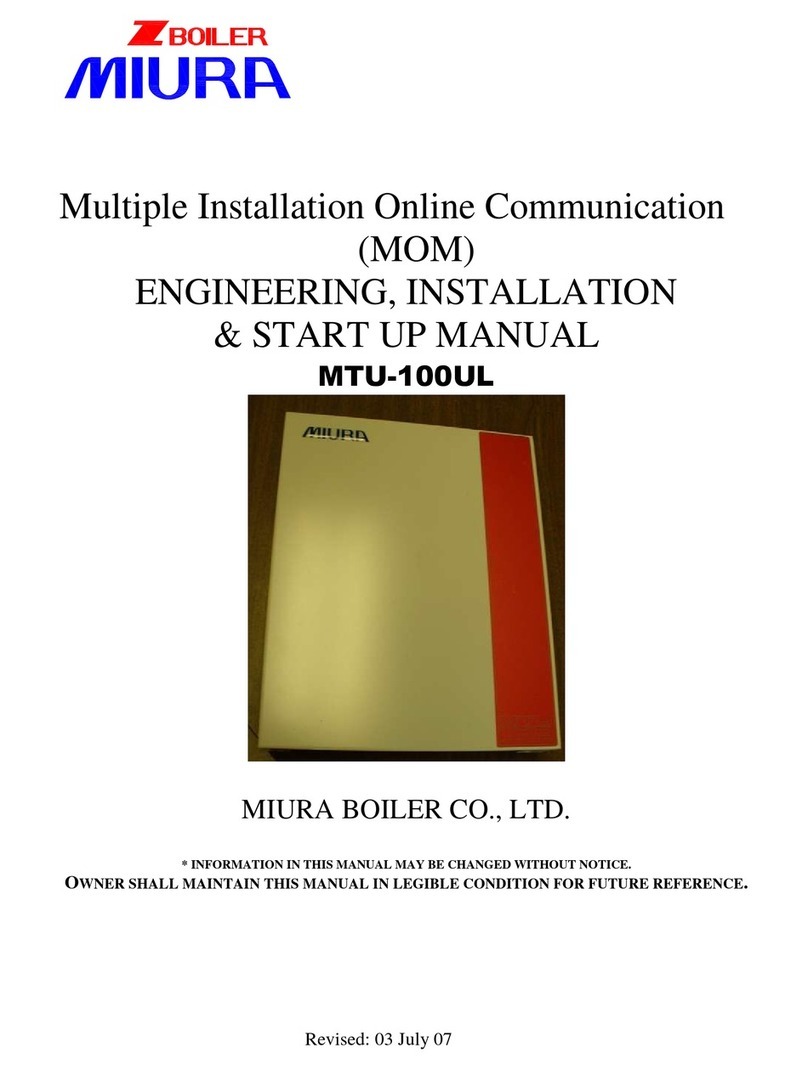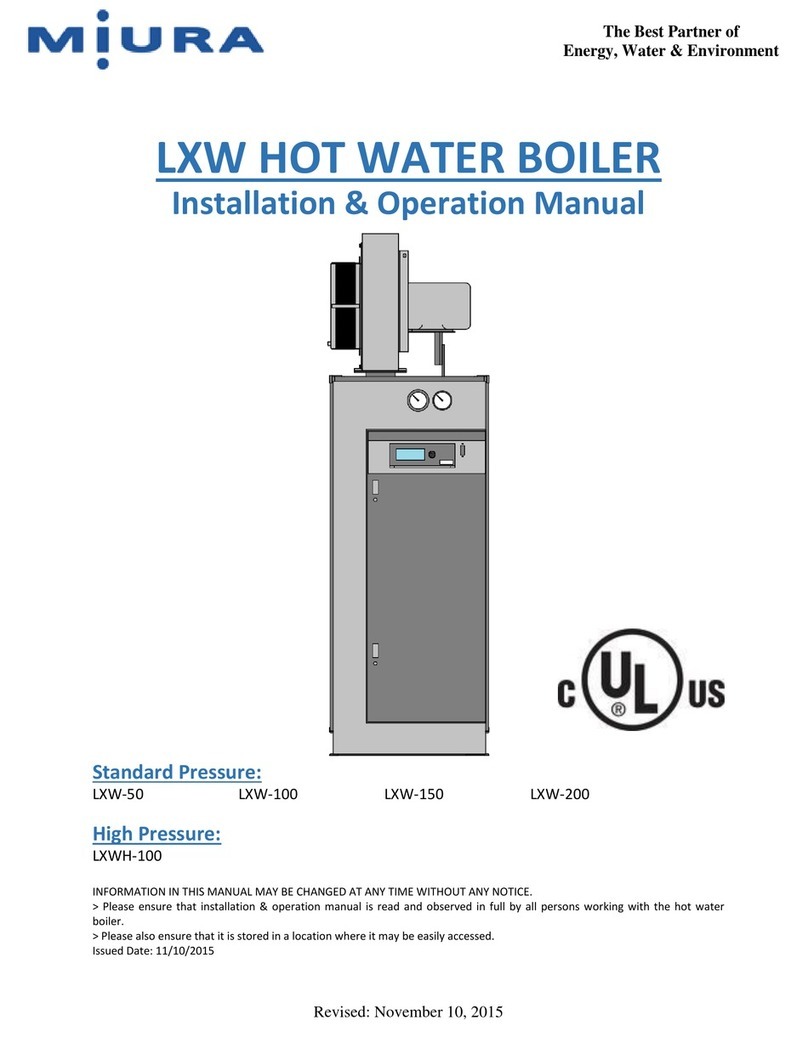
5
2.1 Boiler Installation Inspection
1) Confirm that feed water piping is suitable for your application.
You must be able to easily bleed air from the piping and you must be able to drain water from the
boiler in order to prevent freezing.
The diameter of the piping must be sufficiently large to ensure cavitation does not occur.
2) Confirm that gas piping is suitable for your application.
3) Confirm that blowdown piping is suitable for your application.
Make sure blowdown piping drains horizontally or downward without elevation of the piping to avoid
water buildup.
In addition, blowdown piping must be securely fixed in place.
4) Confirm that water softeners, chemical feeders, drain recovery devices are installed and connected in
a suitable manner for your application.
5) Confirm that the boiler unit has been installed correctly.
6) Confirm that the exhaust system (flue configuration) is suitable for your application.
Confirm that the chimney passing through the wall is properly sealed to prevent rain leakage, and that
the section of the wall is made of non-inflammable material.
Confirm that no combustible materials are present near chimney stacks.
7) Confirm that safety valve piping is suitable for your application.
Confirm that the safety valve can be easily replaced. Make sure the entire piping connecting to the
safety valve has the same diameter or more as the safety valve outlet.
8) Confirm that steam piping does not come into direct contact with combustible materials.
2.2 Inspection of Accessories
1) Water softening equipment
1. Confirm that water softening equipment has been installed and connected correctly. (Examine
piping, power supply, capability for 24-hour operation, etc.)
2. Confirm that the pressure of water is as required by the softner specification.
3. Confirm that all regenerative system is operating normally.
4. Confirm that salt-water suction is proceeding normally.
5. Confirm that the equipment is providing soft water as required.
2) Chemical feeders
1. Confirm that chemical feeders have been installed and connected correctly.
2. Confirm that chemicals are being added in the correct volume.
3. Bleed air from chemical feed pumps.
3) Drain recovery devices
1. Confirm that drain recovery devices have been installed and connected correctly.
2. Confirm that piping has been installed and connected correctly.
3. Confirm that overflow piping, ventilation piping, and other piping have been provided as required.
4. Oil, grease, and other substances can enter the drain upon installation of new drain piping. For
this reason, it is preferable that discharge be continued with the drain bypassed until no
contamination remains in the system.
